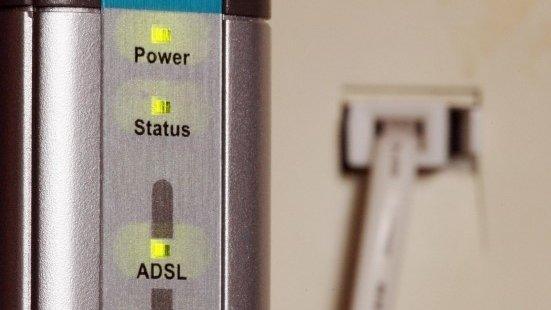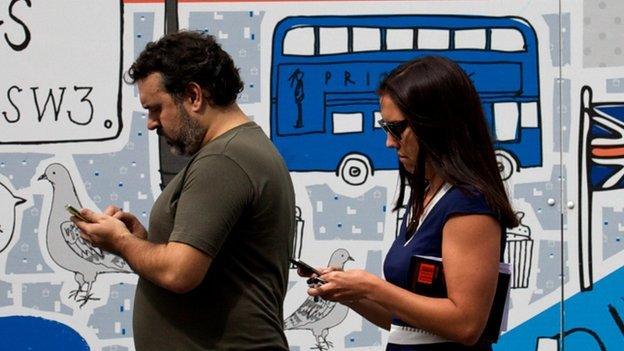Patchy mobile coverage on UK roads and railways
- Published

The future of driverless cars is threatened by poor broadband coverage on roads
A detailed study of mobile coverage on the UK's roads and railways has indicated patchy coverage on both.
The report, external from mobile measurement company OpenSignal found that rail passengers were without a 3G or 4G signal 28% of the time.
On motorways, users failed to get a 3G or 4G signal 24% of the time and on A-roads 33% of the time.
Poor coverage could hamper future driverless-car operating systems that rely on broadband connectivity.
"Not being able to connect to Spotify while in a car isn't that important, but lots of car companies are putting in sophisticated in-car operating systems that rely on a constant connection," said a spokesman from OpenSignal.
"The car manufacturers took it for granted that there would be mobile coverage, but this report shows that a lot more needs to be done.
"If we are going to have driverless cars the whole road system needs to be covered."
As well as measuring the percentage of time that users had access to 3G or 4G, the report also looked at which networks performed best.
EE's 4G network could be accessed 50% of the time on UK motorways, and it had 95% coverage for 2G and 3G on these roads.
Three's customers could access a 3G or 4G signal 92% of the time on motorways, while Vodafone and O2 customers could expect slightly less coverage - 65% and 67% respectively.
On UK A-roads, coverage was very similar between all the networks, while on the railways EE performed best. Its customers were unable to get any signal only 5.7% of the time, compared with 6.4% for Vodafone users.
In October 2013 Ofcom issued its own findings on mobile coverage on the UK's roads.
It found that 9% of roads had no 3G coverage at all. It is planning a more detailed report later this year.
- Published24 October 2013

- Published13 March 2014

- Published17 April 2014
